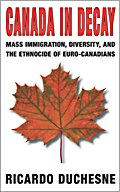New Englands 7th Spanish-language paper begins publishing
By Johnny Diaz
The Boston Globe, November 6, 2009
http://www.boston.com/business/articles/2009/11/06/new_englands_7th_spanish_language_paper_begins_publishing/
At a time when the recession is battering newspapers, a group of Latino journalists in Massachusetts has launched New Englands seventh Spanish-language weekly newspaper.
El Tiempo de Boston, or The Boston Times, began publishing last week as a free paper that focuses on communities with large Latino populations. Coverage also includes local immigration, financial consumer stories, and articles about Colombia, Puerto Rico, and Cuba.
'We saw that there was little coverage and information in other media and we wanted to respond to the needs of the Latino community, said Maximo Torres, 60, founding director of the paper, a native of Peru where he was a journalism professor, and former city editor of Bostons oldest Spanish-language paper, El Mundo.
But El Tiempo de Boston, which draws its revenue from advertising alone, is starting up at a time when many papers are scaling back as the weak economy exacerbates an ad slump. Advertising overall is down 28 percent for newspapers for the first half of the year, according to the Newspaper Association of America. And a new study of multicultural advertising found that national ad spending for Spanish-language media declined about 6 percent from July 2008 to July 2009, according to the Nielsen Co.
Theres already a crowd of Spanish-language papers in the region – all weeklies. They include El Mundo (The World) in Jamaica Plain; La Semana (The Week) and El Planeta (The Planet) in Boston; Siglo21 (21st Century) in Lawrence; Vocero Hispano (The Hispanic Voice) in Worcester; and Providence en Espaol (Providence in Spanish) in Providence.
'It seems to me that the present weeklies have enough challenges in terms of distribution and advertising that you wouldnt want to put one more into the mix, said June Carolyn Erlick, publications director at the David Rockefeller Center for Latin American Studies at Harvard University.
But smaller papers sometimes are better positioned to survive a recession because their niche audiences attract firms that cant afford ads in bigger dailies, some media observers say.
And the regions Hispanic population is growing: New England is home to 900,000 Hispanics, including 437,000 in Massachusetts, according to the 2000 Census. Local leaders and media consultants expect those numbers – and the potential growth in advertising – to rise with the 2010 Census. 'I am not sure that the voices around diversity or multicultural marketing are being heard where they need to be heard in terms of media buying decisions, said Greg Almieda, president of Global View Communications, a multicultural marketing agency in Providence.
Competitors question whether the new weekly can survive at a time when advertisers are pulling back.
El Planeta, launched in 2004, has the largest circulation of any local Spanish-language publication with 50,000 copies. Marcela Garcia, editor of El Planeta, which was bought last year by Phoenix Media/Communications Group, said it helps to be owned by a larger media firm, but the paper has not seen ad growth in the past year. 'Flat is the new up nowadays, she said.
Victor Cuenca, publisher of Providence en Espanol, said a decrease in local advertising this year has been offset by a 5 percent increase in national advertising from big marketers. 'They know and realize that we are the only vehicle [in Rhode Island] to reach the Latino community, said Cuenca of his 10-year-old weekly that has a circulation of 25,000 copies.
Alberto Vasallo III, publisher of El Mundo, said his paper, which has circulation of 30,000 copies, has shed about 15 percent in advertising since last year. 'Is the pie big enough for another Spanish language paper? It may be a challenge, said Vasallo, who added that he has offset the recent ad losses by generating revenue by organizing community events such as the annual Latino Festival at Fenway Park, which drew 8,000 people last August.
Siglo21, which in September 2008 expanded from a weekly to become New Englands first Spanish-language daily, in January reverted back to a weekly as ads began to fade. Publisher Victor Manuel Gonzalez Lemus has expanded the paper, which has a circulation of 25,000 copies, by adding a separate monthly guide in Spanish for Boston and Merrimack Valley readers looking for more health, financial, and immigration news.
For Torres and his 12 contributors, writing, editing, and handling ad sales for El Tiempo is a labor of love: They work as unpaid volunteers out of their homes and offices. Each invested money for a total of $5,000, which helped pay initial printing costs of about $3,500. Torres said ads, which sell for $300 for a quarter of a page up to $1,200 for a full page, are now covering the printing costs for upcoming issues.
'It wasnt the best moment to come out in light of the current economy, but it was the best time for this community to have another option, said Torres, who hopes eventually the paper will generate enough revenue to pay contributors.
The first issue of the paper, which is currently printing 20,000 copies per issue, had articles on Bostons mayoral elections and the potential impact of the Latino vote. The second issue, out this week and thick with ads, has a story about a Dominican immigrant who died after falling ill at the Suffolk County House of Correction.
'The articles are very in-depth, said John Jairo Munara, a hair stylist in East Boston who read the paper.




